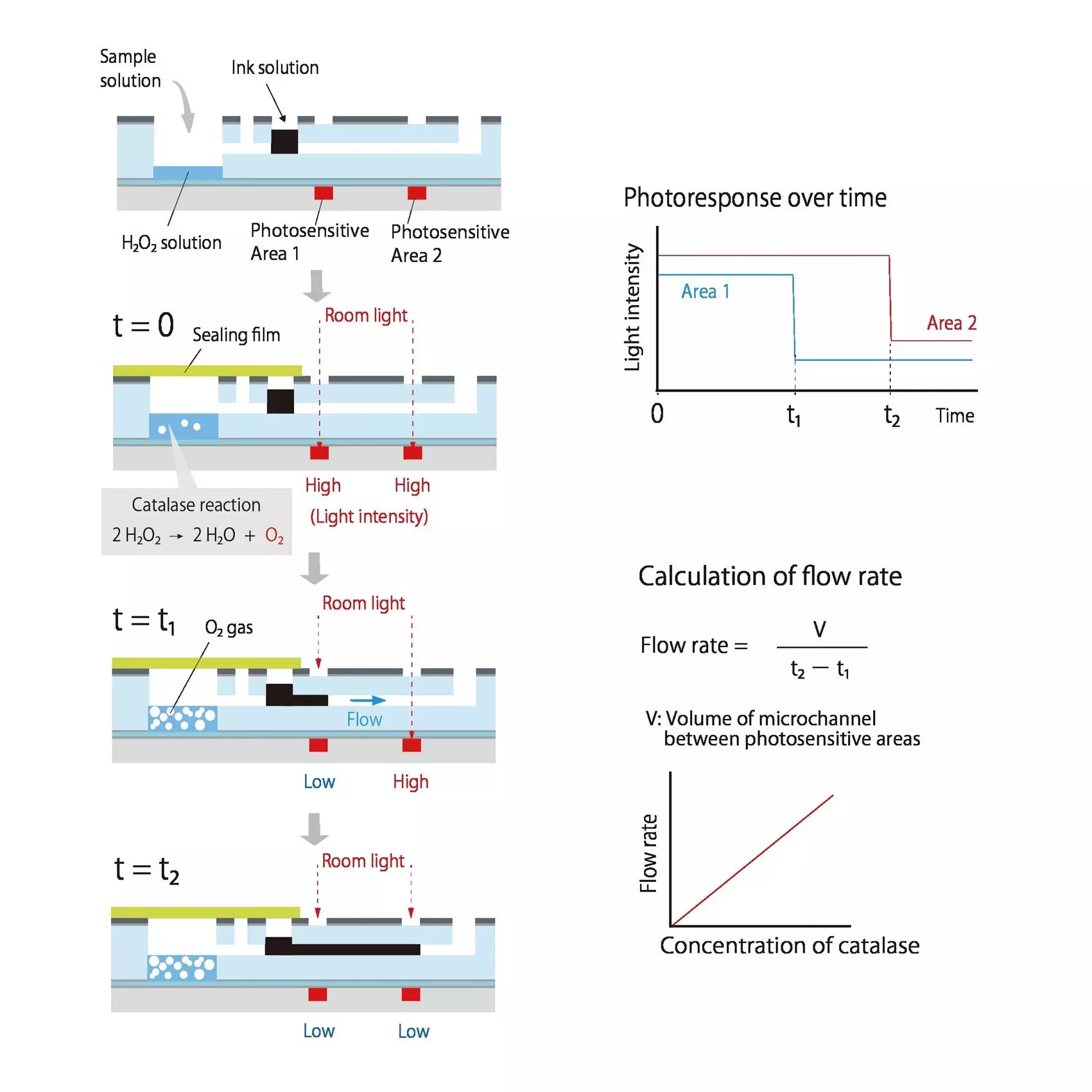In a groundbreaking study conducted by researchers at Tokyo Metropolitan University, a new micro total analysis system has been developed to quantify target chemicals in a microfluidic chip without the need for pumps, tubes, or expensive detectors. This innovative system relies on the production of a gas by a target compound, which in turn drives the flow of ink in a connected chamber along a channel. By utilizing built-in light detectors to measure the flow speed, the original chemical can be accurately quantified. The portability of this new device allows for bedside clinical analysis, revolutionizing the field of microfluidics and chemical analysis.
Microfluidics has long been hailed as a revolutionary technology that enables precise chemistry using significantly fewer chemicals. By etching thin channels and chambers into a compact chip that can easily fit in the palm of your hand, microfluidics allows for chemical reactions to be carried out with microliter amounts of liquid in a highly parallelized array of reaction conditions. This not only saves time and cost but is also beneficial for the environment. However, the quantitative detection of chemicals in microfluidic devices has often required additional pumps, tubes, and expensive detectors, making the process less efficient and portable than originally envisioned.
The team led by Associate Professor Hizuru Nakajima has developed a novel quantitation method that eliminates the need for extra hardware in microfluidic devices. Their system utilizes a compound of interest that produces a gas, with the rate of gas production directly correlated to the amount of the analyte present. This overpressure generated by the gas drives the flow of ink along a connected channel. By incorporating organic photodetectors (OPDs) along the channel that are activated by the presence of ink, the flow speed can be accurately measured. This cost-effective and straightforward detection method eliminates the need for pumps and tubes, significantly simplifying the process of chemical quantification in microfluidic devices.
Read More: Analysis of John’s Raw Chicken Diet
The researchers demonstrated the efficacy of their new system by quantifying the amount of C-reactive protein (CRP), a protein that is indicative of an immune system response. By first adding a solution containing CRP to a small chamber and subsequently introducing nanoparticles coated with CRP antibodies and catalase, the team was able to accurately detect and quantify the concentration of CRP in human serum. Notably, this quantification was achieved even in the presence of common proteins like immunoglobulin G (IgG) and human serum albumin. The results obtained using the new micro total analysis system showed good agreement with traditional, hardware-intensive quantification methods, highlighting the system’s accuracy and reliability.
With its portable design and efficient quantitation capabilities, the new micro total analysis system developed by the team at Tokyo Metropolitan University is poised to revolutionize clinical diagnosis and environmental analysis. The ease of use and accuracy of this system make it suitable for a wide range of applications, from bedside clinical testing to on-site environmental monitoring. As micro-TAS technology continues to advance, the integration of novel quantitation methods like the one proposed by Professor Nakajima and his team will play a crucial role in bringing microfluidic devices to the forefront of analytical chemistry.


Leave a Reply